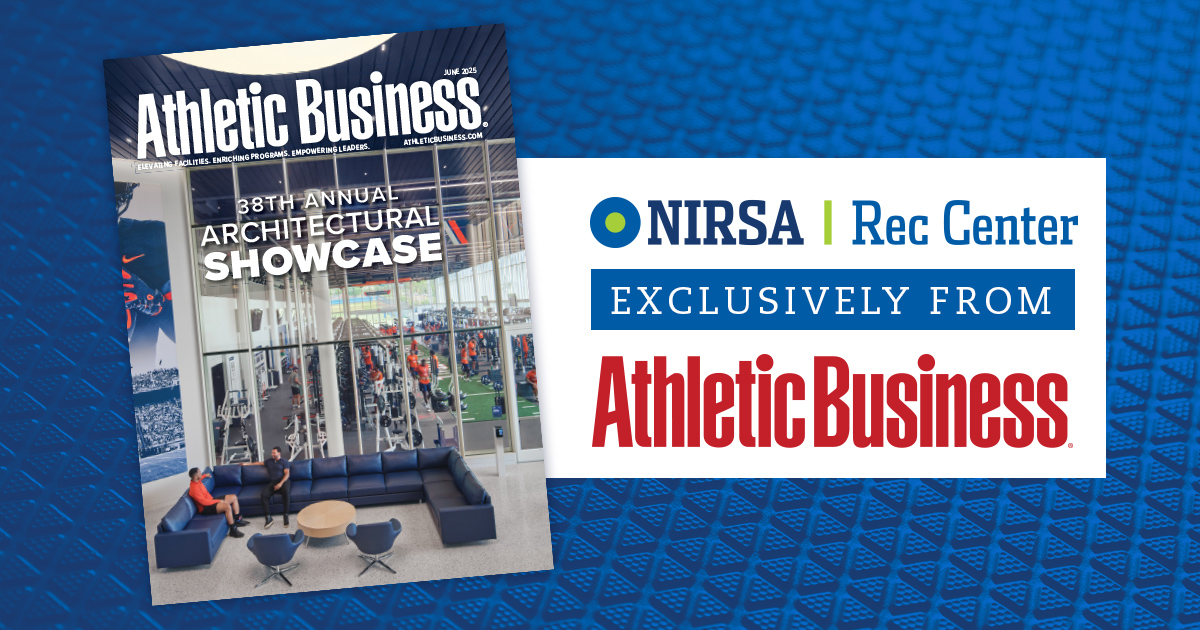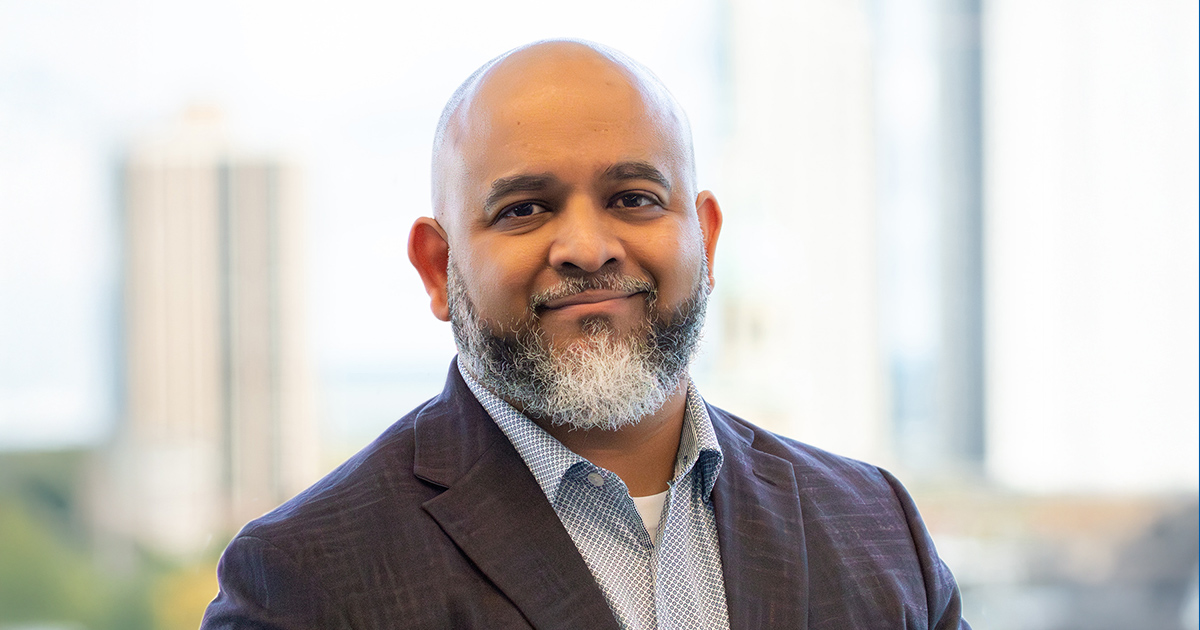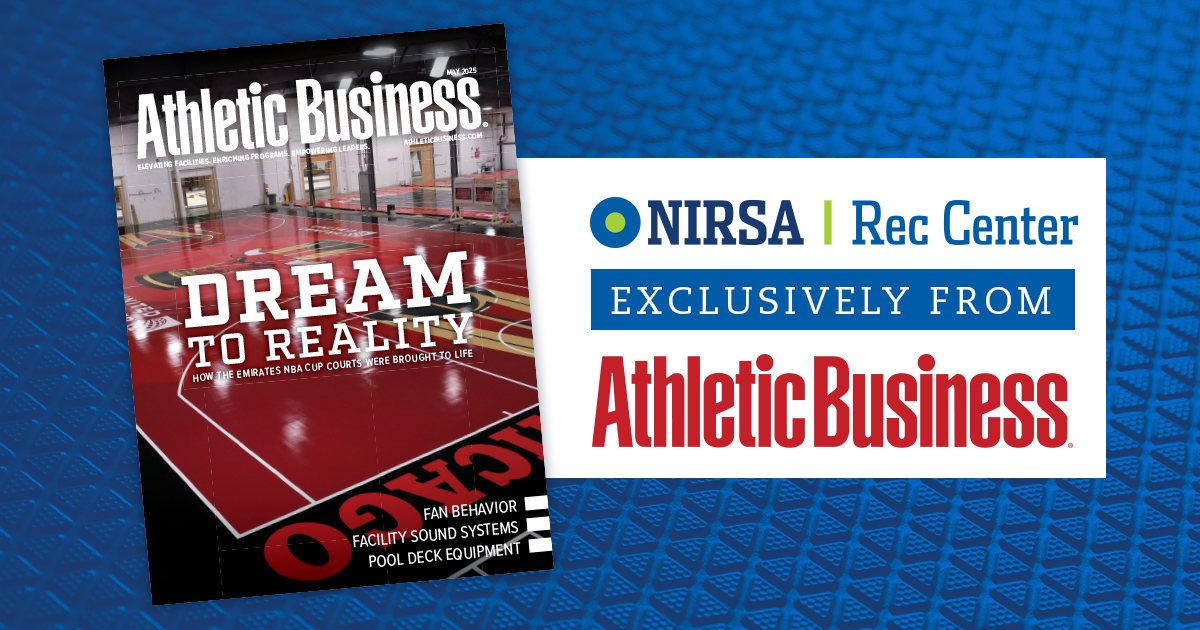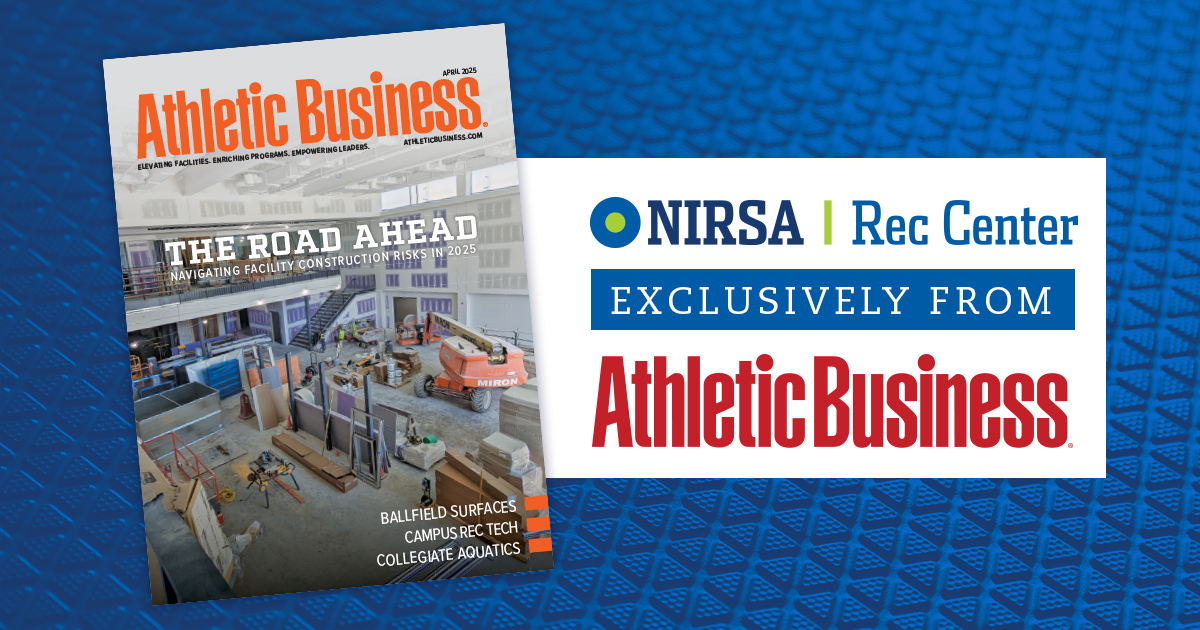As part of the NIRSA LGBTQ+ Caucus, we want to provide a space for members to tell their stories and share how aspects of collegiate recreation—whether they’re an employee, participant, or observer—impact and intersect with our identities as LGBTQ+ people. If you’re reading this as a member of our community, we hope you find strength in our shared experiences; we hope to show those of you struggling with similar issues that you are not alone and that you belong here. For our allies—or those on the road to becoming allies—thank you for hearing our stories, learning about our experiences, and helping to ensure your departments are a welcoming space for our LGBTQ+ cohort.
NIRSA 2020 may have been extinguished, but my passion for EDI still burns bright
Earlier this year, I was supposed to be at the NIRSA Annual Conference in Phoenix leading a three-hour workshop with some NIRSA all-stars (Allie Bogard, Coordinator of Intramural & Club Sports, Montana State University, Andrea Snead, Assistant Director, Recreation & Wellness Center at University of Central Florida, and Erin Patchett, Director, Administration and Assessment at Colorado State University-Fort Collins) on SafeZone training for campus recreation programs. Our goal was to help peers better facilitate SafeZone training or pitch to their stakeholders why it is beneficial for them to attend this (or similar) training programs.
I wanted to be involved in this work for two reasons. The primary one is that as Coordinator of Facilities and Operations with Queen’s University’s Athletics and Recreation department, I directly supervise more than 80 student employees in addition to my role interacting with facility members, teams, clubs, and our campus community as a whole. Friends, colleagues, and supervisors have previously told me that, as a gay male, I shouldn’t need to attend equity, diversity, or inclusion trainings because I know how I like to be treated and I just need to reflect that in my own behavior. Treating others how we want to be treated is a good baseline, but I also know that we have a vastly diverse community and what works to make me feel welcome, comfortable, and safe in the Athletics and Recreation Centre (the ARC) may not work for someone else.
I’ve always believed that if a small change in my behavior—be it a word choice when addressing a group, or the language I use in directing staff—can make someone feel more comfortable in their environment, then who am I to not take that action? Especially if it doesn’t significantly change how I’m going about my day.
Eye opener: My new community invited inclusion
Another reason I wanted to be a part of presenting this workshop is because not too long ago I was a student who would have benefitted from this kind of training. I spent five years in collegiate athletics, first as a varsity team manager and then as a club sport athlete. It wasn’t until my fifth year that I finally had the courage to come out publicly as a gay man. And this was helped in large part by having a coach who consciously made small but effective changes to the culture.
Team “life talks” didn’t just go along the lines of “When you have girlfriends or wives….” They were more expansive: “When you have girlfriends, or boyfriends, or wives, or husbands….” I don’t think I ever imagined I could comfortably be myself until I heard those words in that setting.
The privilege of sharing an office with this same coach, who was also my employer at the time, was also significant for me. One day we were discussing a date I’d recently had and I noticed he was using gender neutral pronouns to refer to the person I’d been seeing because I hadn’t provided any details regarding their gender. It was then that I realized I didn’t have anything to worry about. I don’t know if my boss had attended inclusivity training, or if he just made the conscious decision to start being more inclusive with his language, but I’d be remiss if I didn’t mention how profound an impact his behavior had on me and my final year at the University of Windsor.
For some, costumes aren’t only worn on Halloween
Sometimes it’s easy to make changes, and you don’t necessarily need to attend any sort of training to make them; but training can also provide the spark you need to consciously focus on those changes. It wasn’t until I became involved in recreation that I started to realize the impact a single word could have on someone and realized the need to pursue my own changes. One of my biggest personal “Aha!” moments came in my third year at the University of Windsor when I was supervising marketing for our department. I wanted to find ways for us to become more involved with the campus community and one of the ways I thought to do this was to enter staff (including myself) in the annual Campus Pride Centre’s Halloween Costume Contest.
My vision for this initiative was twofold: Allow the University of Windsor’s Athletics and Recreation Department to show that we support the larger campus community—hopefully, members of the community in turn would be encouraged to check out our programs—and I also wanted to get my first glimpse of an event geared towards the LGBTQ community, a community which I was just starting to come to terms with being a part of.
My memories of that night aren’t focused on the games or the costume show (although in my totally unbiased opinion, I had quite the runway walk in my clown suit). Instead, they are of meeting with the event organizers. This was a new environment for all of us from Lancer Rec and before any of the evening’s setup began we had a brief discussion with the organizers on how to ensure inclusivity while we were there. This was the first time I was made aware that approaching a group of people and saying, “Hey guys” can really put someone off and make them feel unwelcome—particularly if they’re struggling with gender identity or appearance. I’ve since made the switch to “y’all,” which, I’m told, can sound quite different with a Canadian accent.
The costume contest wasn’t the successful personal foray into LGBTQ culture I had envisioned; it was another two years before I was ready to come out. But the experience was a major factor in starting me down the path of being as inclusive as possible and trying to find ways for our rec program to do the same.
Sport and team can amplify a sense of belonging
As an athlete, I didn’t have a dramatic coming out story. I told my coaches. I posted a picture with the guy I was dating without any kind of “coming out” caption. And that was the end of it. Nobody from the team asked questions. Nobody gave me a hard time. I was still their teammate, albeit one with a boyfriend. Nothing changed. Nothing I’d spent countless years scared of materialized.
Being on the Lancer baseball team was the best thing for me as I worked towards coming out because the coaching staff, the players, and the family and friends who support the team are the most caring individuals in the world. They were my support system even when they didn’t know it. Without them—my second family as I worked through my studies hours away from my parents and brother—I don’t know where I would have ended up.
But that’s not the story I wanted to tell during the NIRSA 2020 workshop. I didn’t just want to discuss why I started focusing on issues of equity, diversity, and inclusion, trying to build a more welcoming space within Athletics and Recreation. I wanted to talk about what an incredible impact inclusivity can have when done successfully.
Collegiate recreation is all about inclusion
I started my job at Queen’s two weeks into recovery from a tonsillectomy and just one week into recovery from having to have my wounds re-cauterized because they wouldn’t stop bleeding. I was in a city I had never been to before—hours away from any family or friends—and I could barely talk. The last thing I wanted to do was to continually introduce myself and talk about my personal life, which historically included the question “Do you have a girlfriend?” rather frequently. Luckily for me, word had gotten around that I was recovering from that surgery and couldn’t talk much, so my introductions were largely handshakes and a faint “Nice to meet you.”
But once the introductions were finished, and I was being shown down to our coordinator’s office, the staff member who was showing me around asked if I had a partner who was coming to Kingston or was at least here to help take care of me while I recovered and settled in. I didn’t say anything about it at the time, but it really stood out to me that she chose to use “partner” instead of “girlfriend.” I quickly noticed that was common usage when I was better able to talk and other coworkers started asking me about my personal life.
In a new environment, I’m typically hesitant to reveal my sexuality; for most of my life, I believed that people would react negatively to that information. But with that one word, “partner,” I knew that I was welcome at Queen’s no matter what. So I didn’t hesitate to tell the staff member that my boyfriend (at the time) had stayed home and wasn’t making any plans to come out to Kingston, Ontario. Due to the obvious culture of inclusion Queen’s University consciously built, the few times I was asked if I had a girlfriend, I was able to answer honestly. I never encountered a negative response when I said I had a boyfriend.
That inclusive, welcoming culture is the real reason I decided to write this reflection. I don’t want to just tell my story, but to also celebrate what I didn’t get to share in that workshop in Phoenix. At Queen’s we always strive to “Lead the Way,” and we make no exception when it comes to our focus on equity, diversity, and inclusion (EDI). Last year, the Athletics and Recreation Department launched our EDI Committee, which I was lucky enough to serve as the Chair of pre-COVID. Nobody served on this committee because they belonged to a certain demographic; we were all there because we wanted to help ensure Queen’s continues to improve when it comes to embracing EDI.
Having seen EDI initiatives exploited for profit before, I think a committee formed by eager volunteers is the best way to operate. I was once asked to support a “Safe Space” campaign after coming out because “If someone in [my] situation”—(I understood that for this individual, “situation” meant “A gay athlete and a person heavily involved in campus recreation”)—“supports this campaign, it will look great for us.” So the fact that we’re all serving on the committee by choice means we want to be there and are invested in improving our department and making meaningful changes. It’s about more than just putting a face on display to show we’re working on being inclusive.
SafeZone training can help your team become more inclusive
What this reflection ultimately boils down to is the importance of SafeZone, or similar, training for campus recreation (and varsity athletics in Canada, since we largely share our spaces and resources). Proper training illuminates key points in a way that resonates with those who otherwise wouldn’t see the reasoning behind a change in practices. It doesn’t have to be grand gestures or programs. It doesn’t have to involve excessive signage stating that all are welcome. Something as small as a statement on inclusivity on the website can be what someone needs to get in the door. And the simplest change in vocabulary—such as “partner” instead of “girlfriend” or “boyfriend,” or using words like “y’all,” “folks,” “friends,” or “team” instead of “guys”—can be all the difference one person needs to feel welcome.
This advice applies to individuals as well. We can’t presume to know someone’s gender identity or preferred pronouns when encountering them for the first time. So small changes can make a world of difference. Instead of approaching someone with “Excuse me, sir/ma’am,” you can eliminate the “sir/ma’am” and go with a simplified “Excuse me.” Or replace gendered terms with something gender neutral like the word “friend.” We all want our spaces to be inclusive, and to do that we need to make sure people feel welcome to be their own unique selves in our spaces.
Logan feels why you should care
Another way we can ask members or new staff to help with inclusivity is to introduce ourselves and our pronouns simultaneously. This can help us make a personal connection, invites the other person to share their pronouns as well, and lets them know you will make every effort to use their correct pronouns from that point forward. Some of you may be reading this and thinking, “I’m cisgender and very much fit my appearance, so why do I need to introduce my pronouns when I’m very clearly he/him or she/her?” That’s a valid question, and one with an easy answer. By including your pronouns in an introduction, you’re inviting the person/people you’re speaking with to introduce themselves and their pronouns. It’s a small change that signals your willingness to help them feel welcome and safe in this new environment.
Think of it this way: You’re working tonight, and an individual—we’ll call them Logan—severely sprains their ankle and requires first aid treatment, and even possibly a hospital visit. Logan is non-binary and uses they/them pronouns. Logan has long hair and is wearing clothes you typically associate as feminine. When assessing the scene and completing your report, you introduce yourself and your position, get the information from Logan, and call for first aid. In placing the call, you state “she has a very bad ankle sprain and may require transportation to a hospital for further attention.”
You don’t know Logan identifies as non-binary, or uses they/them pronouns, and suddenly Logan doesn’t feel as welcome in your space. This may make Logan feel uncomfortable with medical treatment after being misgendered to the medical staff. But if you rewind this situation, and enter the gym where Logan is waiting for help, and start with, “Hi there, my name is [your name]. I’m a [your title] and I use [your] pronouns. Can I ask your name?” Starting in this way, you then invite Logan to also share their pronouns, and in this brief interaction you have helped to show them that this space is safe for them (albeit not for their ankle) and that you want to include them. It’s a small change, but if you view it from the lens of someone who will be impacted by it—as opposed to viewing it from the lens of “I’m clearly a [your gender identity + expression], so why do I need to share my pronouns?”—I hope you realize how big an impact this small change can have!
Connect with me and the NIRSA LGBTQ+ Caucus
Thank you for taking the time to read this post. My words by no means encompasses all the ways to create a safe space within your department. They recollect some of my experiences and a few of the ways I have made changes to create a more welcoming environment.
If you have feedback from your own personal experiences on this topic, I would love to hear from you to help further my own education and improve my interactions to include all individuals! If you have questions on this topic, I would be happy to answer them, or refer them to those with greater knowledge and experience. I can be reached at zack.sephton@queensu.ca.
If this is your first time hearing about NIRSA’s LGBTQ+ Caucus, and you’re interested in joining, becoming more involved with our community, or sharing your own experience, please contact myself and/or Cindy Tse, who can be reached at cindy.tse@colostate.edu. You can also check out the NIRSA Caucus page.
Please note: NIRSA’s caucuses are run by members of the community, for members of that community. Their format, frequency, and outcomes are designed to meet the dynamic needs of the community. No two approaches look exactly the same. Currently, we typically reserve caucus attendance and participation to those within the LGBTQ+ community.
- If you are interested in highlighting your campus or a NIRSA member’s achievements on your campus, pitch us your ideas.
Zack Sephton is currently a Coordinator with Facilities & Operations at Queen’s University; you can email him at zack.sephton@gmail.com.







